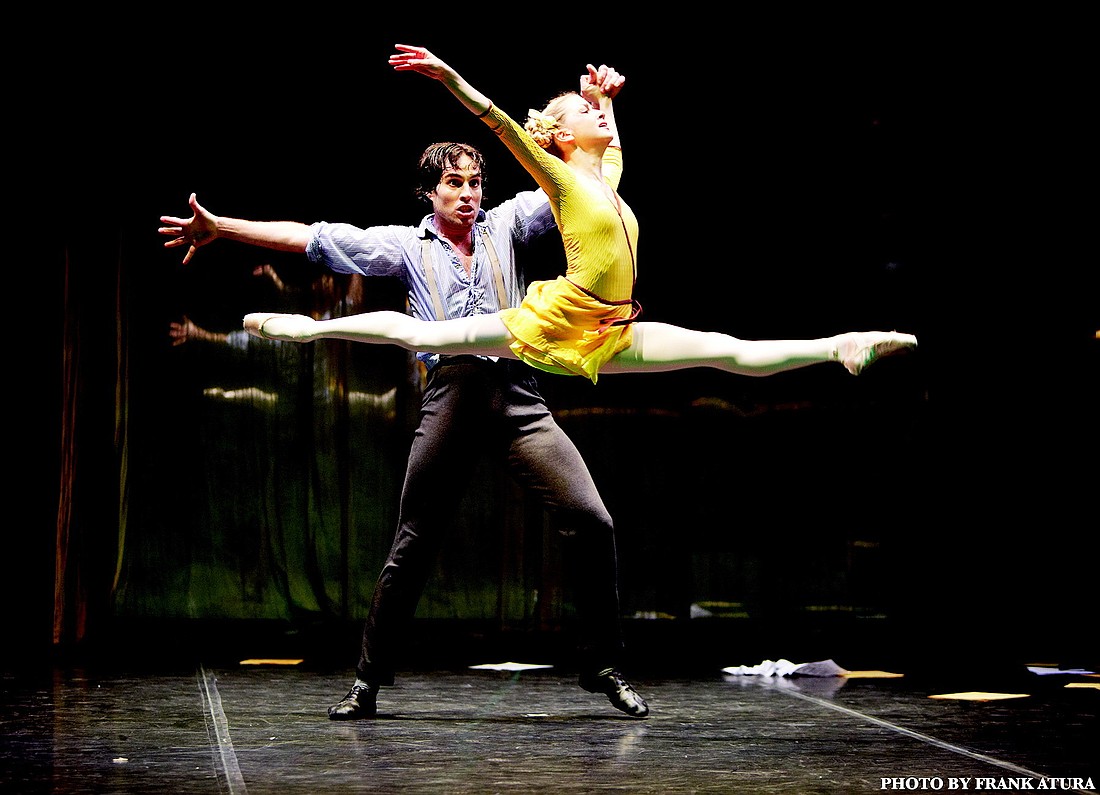- April 17, 2024
-
-
Loading

Loading

Pairing Flemming Flindt’s 20th-century, dark, dramatic ballet, “The Lesson,” which centers on a plot of murder, with the delightful choreography created in the 1880s by August Bournonville wasn’t exactly out of this world, but it definitely was “Out of Denmark”
The Sarasota Ballet performed the cheerful choreography of Bournonville, after whom the style of dance is named, with aplomb, and, yet again, demonstrated their acting abilities are just as great as their dancing skills in “The Lesson.”
“The Lesson” truly was the standout piece of the evening. Many people don’t know that Danish choreographer Flindt actually retired on Longboat Key, where he subsequently died in 2009. Flindt staged “The Lesson” on the Sarasota Ballet more than a decade ago, however, his wife, Vivi Fleming, took over her late husband’s role and staged it for the current company.
The basic plot is this: Ballet teacher kills his pupils, and the pianist helps him clean up the mess. Octavio Martin, who played the ballet teacher, continues to shine in dramatic roles. It can’t be easy to play a serial killer, but Martin did so brilliantly. With awkward ticks and painful grimaces, Martin infused his demonstrative movements, taught to his pupil, Sara Sardelli, with the wickedness of Dracula.
Sardelli danced the role of the ever-eager student with a natural innocence only intensified by her petite frame. Sardelli showed virtuosity in her transition from sweet échappés to frightened arabesques paired with arms reaching out in desperation. Such a psychologically challenging role requires a certain depth that requires one to reach beyond normal acting abilities. Sardelli was so close to achieving that depth. She is a bright, young star who should be cultivated.
Pianist Amy Wood stole the show. She was absolutely exquisite in a role that really only requires one to walk in patterns and make a few arm movements. Her sharp sense of movement, paired with her standoffishness, encased Martin’s and Sardelli’s drama and made it whole.
To explain the Bournonville style of dance to the audience, Director Iain Webb did a short demonstration prior to the start of the show. He leaped and jumped, demonstrating the ballon — a light, elastic quality in jumping in which the dancer bounds up from the floor, pauses a moment in the air and descends lightly and softly, only to rebound in the air like the smooth bouncing of a ball.
Few dancers managed to capture that movement in Bournonville’s choreography. But, Ricardo Graziano, Kate Honea and Logan Learned perfected the Bournonville bounce.
The Bournonville style also requires one to have great speed of the legs — be it small or large movement — with the contrast of eloquent and little arm movement. Honea and Learned had no choice, because the choreography in the “William Tell” pas de deux required them to hold their arms perched at the underarms, which meant that they couldn’t use their arms for force in turns or jumps, making their steps much more difficult.
Even with this predicament, Learned managed to do assembles, traveling almost as far as his own height and landing into grand plié. Honea held her arms close to her chest while she completed sequences of entrechats, échappés and sautés in second position, which looked like she had a secret trampoline under her feet.
Graziano could execute a pas de couru jeté like no other. He and Honea must have used the same secret trampoline! Graziano also danced petite allegro with exceptional beats, showcasing each one in between perfect fifth positions, an important part of Bournonville choreography.
Other notables from the Bournonville sections included:
• Miguel Piquer, who is the king of pirouettes, still managed to astound — even with the Bournonville style that requires one to begin from second position instead of fourth in “Napoli, Act III.”
• Simon Mummé and Ricki Bertoni were hilarious as competing jockeys in “The Jockey Dance.” Does anyone know who won that race?
• Ashley Ellis had sissonnes that anyone in the ballet world would covet in “Napoli, Act III.” And, it was a pleasure to see her enjoying the time on stage with a presence that was lacking in previous performances.